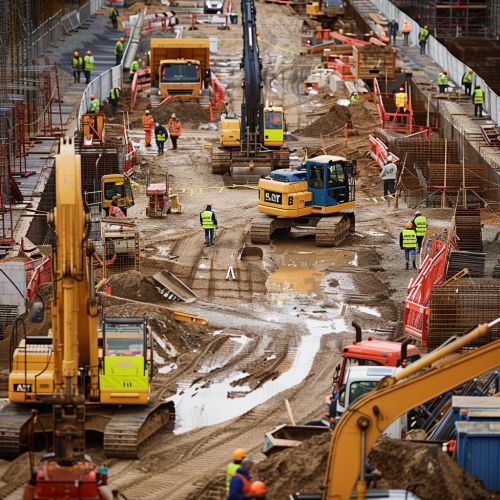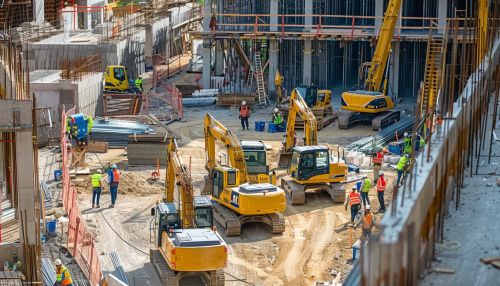Construction Technology
Introduction
Construction technology refers to the collection of innovative tools, machinery, modifications, software, etc. used during the construction phase of a project that enables advancement in field construction methods, including semi-automated and automated construction equipment. It refers to the use of technology to improve construction procedures.


History of Construction Technology
The history of construction technology is as old as humanity itself. The Neolithic Revolution is considered the first technological revolution, where humans started to use tools for construction purposes. This era saw the invention of basic construction tools that were made from stone, bone, and wood. As civilizations developed, so did construction technology. The Egyptians developed simple machines, like the ramp and the lever, to aid construction processes. The Romans developed concrete, which is still the cornerstone of today's modern civil constructions.
The Industrial Revolution in the 19th century saw the introduction of new construction technologies. The development of steam-powered machines and later, electrically powered machines, revolutionized construction. In the 20th century, construction technology advanced with the development of new construction materials and machines, such as elevators and cranes.
In recent years, construction technology has focused on improving efficiencies and reducing environmental impact. The development of green, sustainable construction practices is an example of this shift. Today's construction technology is characterized by digital tools and systems, such as Building Information Modeling (BIM), and construction software for project management.
Types of Construction Technology
Construction technology can be classified into several categories, each serving a specific purpose in the construction process. These include:
Building Information Modeling (BIM)
BIM is a process that provides construction professionals the insight and tools to efficiently plan, design, construct, and manage buildings and infrastructure. It is an intelligent 3D model-based process that equips architecture, engineering, and construction professionals with the insight and tools to more efficiently plan, design, construct, and manage buildings and infrastructure.
Construction Software and Apps
There are a plethora of software and apps available for construction management. These software and apps provide various functionalities, such as project scheduling, cost control, quality management, document management, and contract administration.
Drones
Drones are being used increasingly in the construction industry. They provide construction professionals with a bird's eye view of the construction site, enabling them to inspect hard-to-reach places.
Virtual Reality (VR) and Augmented Reality (AR)
Virtual reality (VR) and augmented reality (AR) are being used in the construction industry for various purposes. They can be used for simulating construction designs, improving safety protocols, and enhancing training procedures.
3D Printing
3D printing is being used in construction for producing prototypes and models, as well as parts and components that can be used in construction processes.
Artificial Intelligence (AI)
AI is being used in the construction industry to manage and track the progress of construction projects. AI can be used in construction project management systems to improve efficiencies and reduce costs.
The Future of Construction Technology
As the digital age continues to influence every aspect of our lives, construction technology is expected to continue evolving. Future trends in construction technology are expected to include more integrated software and apps for project management, more advanced drones for inspection and surveying, more integrated and detailed BIM systems, and increased use of AI and VR. Green construction and sustainability will continue to be a major focus of construction technology.
